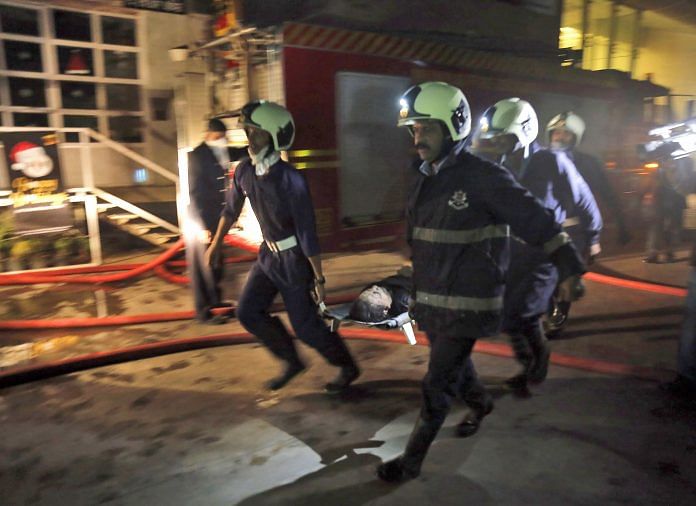Simply fighting the fire after it breaks out is not the solution. There is a need to reform the city’s own planning systems, norms and inspections.
There are a number of stories of fires that have formed part of the learnings of urban planning researchers, and Thursday night’s fire at Kamala Mills brings two of the earliest such learnings to mind.
One is the Great Chicago Fire of 1871 when an inferno in Chicago’s business district destroyed a large number of buildings. The intensity of the fire was largely blamed on the wooden construction, strong winds, failure of fire engines in reaching the spot on time due to lack of sufficient hoses. The fire pumps at that time were powered by steam and fire vehicles driven by horses, which had fallen sick due to an epidemic. Similarly, the Great Fire of London in 1666 destroyed almost a third of the old city.
Mumbai has also had its own tales of fires such as the Dockyard explosion that engulfed a number of buildings in the old Bombay in the 1940s, and a set of learnings repeated by all authorities and urban planners every time such a disaster struck.
However, Thursday night’s fire at Kamala Mills in many ways shows that the poverty of Mumbai’s administrative capacity is still worse than that of Chicago in 1871 or London in 1666.
Although these fires and their investigations have been the basis to reform building codes, standards, and promoting the use of safer materials such as cement, steel and concrete for city structures, the incident once again shows the extremely poor capacity of the municipal body to prevent such incidents.
The civic body takes immediate short-term measures after any such disaster, while ignoring the long-term ones. For instance, suspending five officials after the fire may be necessary to fix onus but it is still a short-term measure. So is calling for a fire audit of all such structures after a deadly blaze rather than making systemic changes to ensure that fire norms are complied with and there are checks every six months as prescribed.
Simply fighting the fire after it breaks out is not the solution. There is a need to reform the city’s own planning systems, norms and inspections, and ensuring that they are free from the blatant meddling from the powerful political class and real estate lobby that exists today.
The planning ecosystem of Mumbai, which is already space-starved, dense and congested, is heavily influenced by the political class in power. The administrators fail to understand the importance of local area plans, the complexity of land uses, there is a lack of information, maps, knowledge, enforcement, and the culture of negligence along with the attraction for fast and multiple entertainment avenues is worsening the situation.
But, as a polity we are all partners in these failures. While the lack of enforcement of fire safety measures or checking fire-fighting equipment for sufficiency and preparedness is the job of the authorities, the primary responsibility lies with the owners who run such restaurants and bars. In case of the fire at Kamala mills, there was primitive material such as bamboo and tarpaulin on the premises. Most people appear to have suffocated due to deadly smoke, which could be from the combustion of different materials on the site.
Even if most establishments are following fire safety norms, they should also understand that what the government prescribes is usually the bare minimum to prevent disasters. On the other hand, they usually go by the assumption that what is prescribed is for the maximum level of precaution and tend to cut corners.
Every incidence of a fire in cities in modern times has only helped systems improve albeit at a huge cost. We must understand that the modern urban economy and the social eco-system can be sustained and safely enjoyed with long-term investments and intellectual capital. Unfortunately, all that is lacking in Mumbai.
Sulakshana Mahajan is a Mumbai-based architect and urban planner. She was a consultant at the Mumbai Transformation Support Unit.







Are we to believe that only five very junior officials were the only responsible functionaries who failed to recognise and then act upon what were egregious instances of violation of basic fire safety precautions and procedures ? There are so many people far above them on the food chain, including elected corporators who wield enormous power, including the posting of officials of their choice, who must have been partying in this zone all through the year. Comparisons with 1666 and 1871 are clearly overdone, but Bombay deserves better.